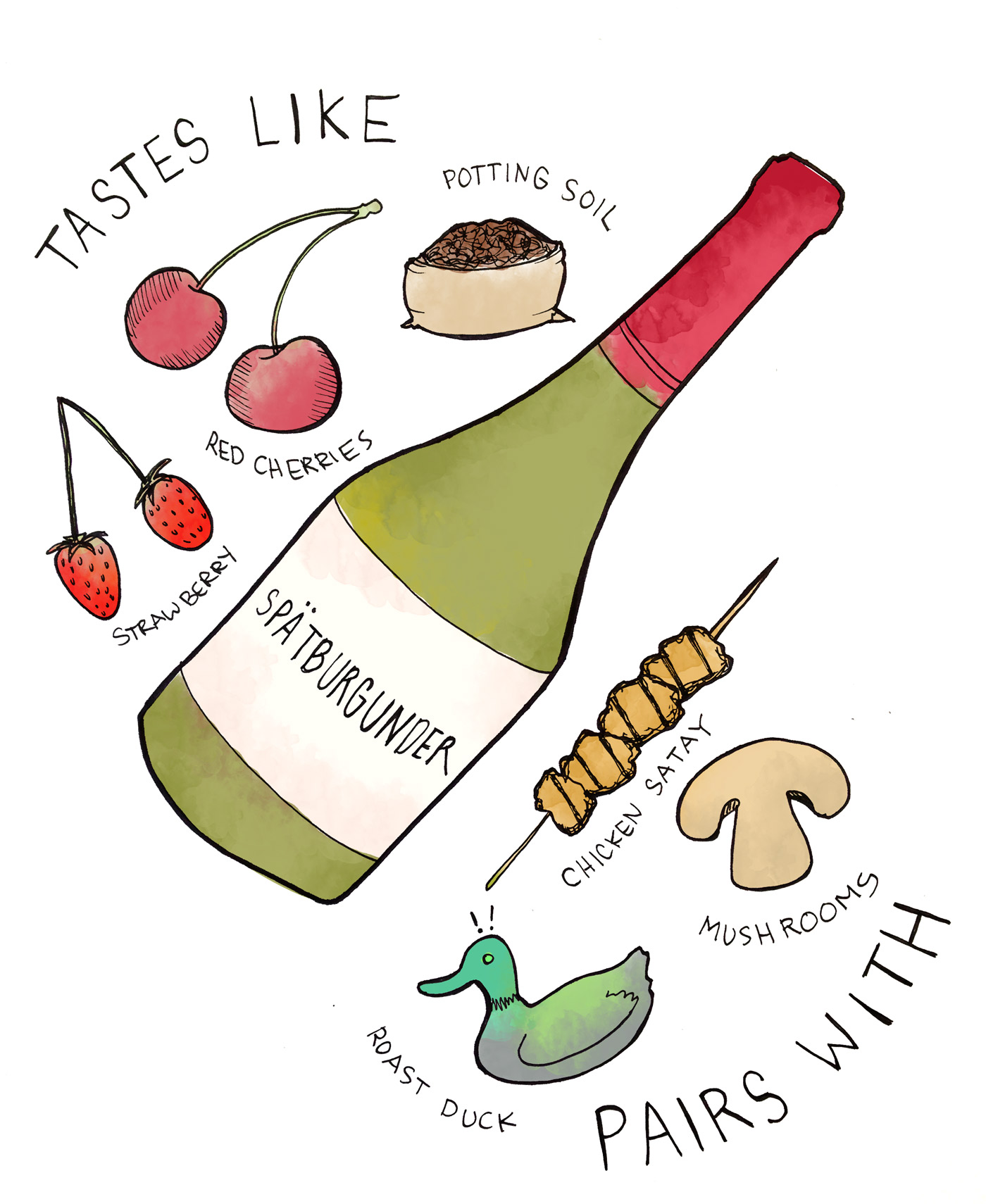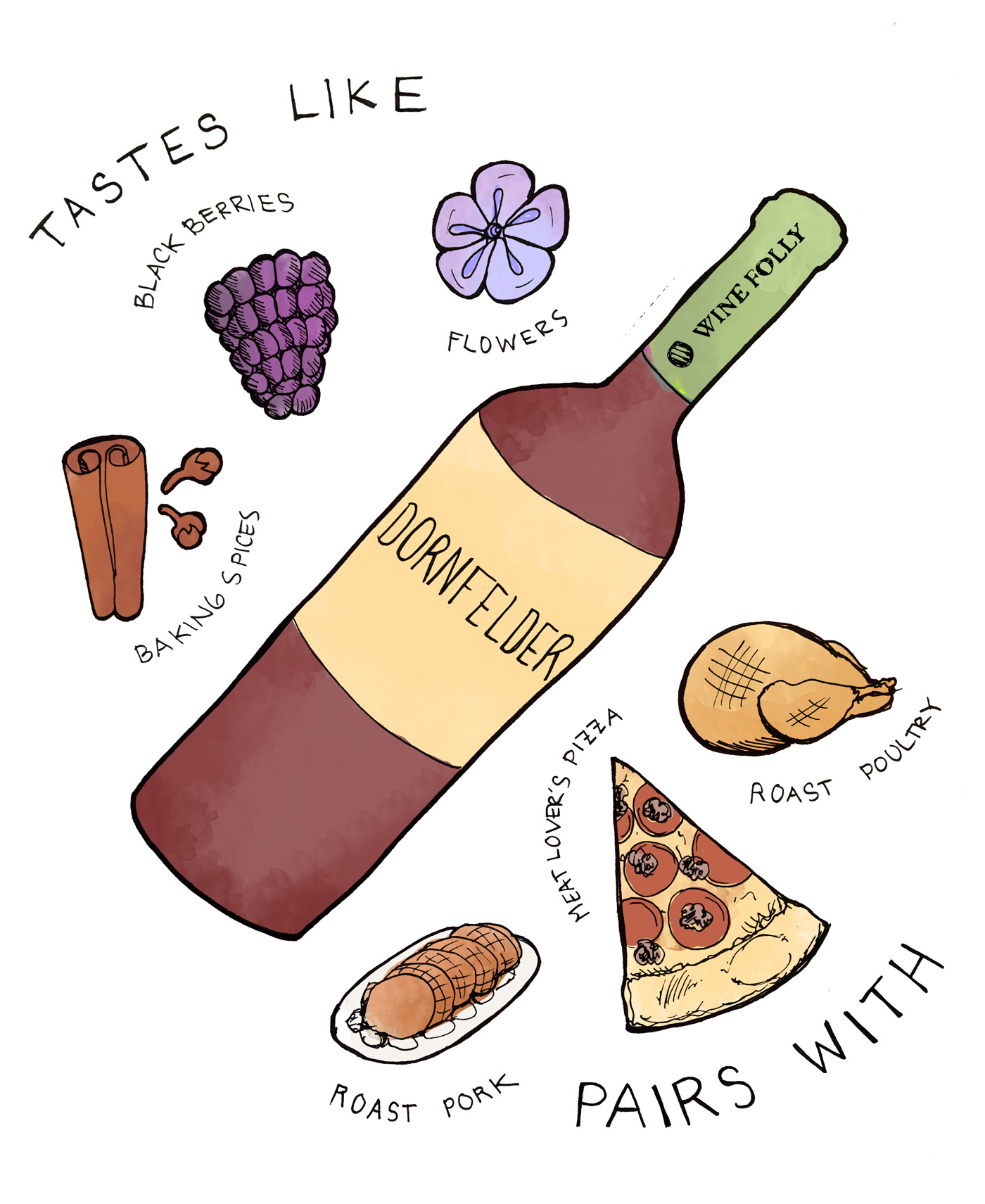Red wine in the summer is usually about as palatable as warm mayonnaise. It may even cause you to sulk in dark air conditioned room just so you can drink one. Fortunately, there are several red wines that are ideal for summer drinking. So, grab your culottes and deep v’s and get ready for Stacy Slinkard (the prolific wine educator from about.com) to reveal 3 red wines found from Germany that are amazing in the summertime. –Madeline
3 Awesome German Reds
Germany’s red wine scene may not garner the same press as the country’s ultra-famous white wines, but they are every bit as food-friendly, fresh, and lively as their dazzling white wine counterparts. Keeping climate (cool) and latitude (northern) in mind, German red wine expectations should be set towards lighter bodied, high acidity, and vibrant aromatics (with a few exceptions). These lively German reds are picture perfect for summer sipping as they refuse to be weighed down by overripe fruit, excessive tannins, or rowdy levels of alcohol. Instead, expect some German reds to come across as “heartier” rosés, or highly expressive wines that carry an exceptional capacity for versatile summer fare, thanks in part to elevated acidity and well restrained alcohol.

Trollinger
“twa-ling-er”
- Perfect for: picnics, sunny afternoons by the lake or beachside surf
- Pairs with: playing hooky, traditional sausage, Mediterranean dishes, plates of antipasto, and soft cheeses like Brie and Camembert
- Taste Profile: strawberry, cherry, and a bit of bubblegum, wisp of smoke, along with fresh-faced acidity
- About Trollinger: Trollinger is the hometown grape hero of Württemberg, tucked into the southwest corner of Germany. However, this same red wine grape stakes some serious claims in northern Italy, where it is known and grown as Schiava (and just to keep it complicated, it’s also called “Vernatsch”). With its lighter color profile and strawberry meets wild rose-based nose, this German red has several local renditions that could readily pass as a true rosé wine in many glasses around the world.
Spätburgunder
It pretty much sounds like it looks, though that’s not always the case for a pretty pronunciation of German wine words or standard nomenclature. Happily, this grape is a quick four syllable salute: “spat-burg-under.” You’ve probably tried this variety before, but not from Germany!
- Perfect for: sophisticated dining, flashy corporate gatherings, and elegant evenings at home
- Pairs with: attractive hotel staff, chicken satay, roasted duck, earthy mushroom themes, and seasonal veggies over quinoa
- Taste Profile: cherry, strawberry, earthy, low level tannin, and medium to high acidity
- About Spätburgunder: Better known as Pinot Noir in the rest of the world, Spätburgunder (literally “late Burgundian”) is the most widely planted red grape variety in Germany and weighs in third for overall plantings after the nation’s dominant darling, Riesling, and the always hardy Müller-Thurgau. Surprisingly, Germany also sits at #3 for the largest plantings of Pinot Noir in the world, after France and the U.S. Typically preferring the warm weather regions of the Pfalz, the Rheinhessen and Baden, Germany’s Spätburgunder has made significant strides in building noticeably fuller-bodied wines that take extremely well to well-managed oak aging. In fact, several German producers are working with top Burgundian coopers to select barrels that promise to bring out the best in the regional Pinot Noir-based reds and paying homage to Pinot Noir’s motherland in the process. While, lean, fresh styles of Spätburgunder abound, there are plenty of bottles bringing more depth, concentration and lingering smoke buried within the vivid fruit profiles of highly coveted German-style Pinot Noir.
Dornfelder
One of Germany’s most popular man-made grapes, Dornfelder was developed in the mid-1950’s in Württemberg. Super versatile, Dornfelder may make a double debut as a youthful, fresh, fruit forward red wine or shake it up and give imbibers a curious glance of its more austere profile tamed by oak and time.
- Perfect for: Adventure time, lets-forget-about-the-news-for-one-night, and “now for something completely different.”
- Pairs with: Friday night favorites like meat lover’s pizza, the Netflix show ‘Legit’, meatballs or roasted poultry and pork.
- Taste Profile: black fruit themes prevail, along with remarkable floral characteristics, medium to full-bodied, oak-aged versions display a captivating array of warm baking spices (think: clove, vanilla, nutmeg).
- About Dornfelder: Highly pigmented, with thick black skins, Dornfelder brings considerable color and acidity to the glass, along with remarkable yields to the vineyard. Originally employed as a key blending grape to amplify color compounds in Germany’s paler red wines, today Dornfelder is often a standalone variety. Running the wine gamut, from light-bodied, fruit-filled and immensely approachable to showcasing a serious side with a fairly full body while leaning heavily into oak-induced influences, Dornfelder’s dual appeal to the last minute picnic packer and German red wine connoisseur is understandable.
Last Word
Can’t find these 3 exact German wines in your area? No worries, you can still drink red wines in the summer. The key features of summer reds are low tannin and higher acidity. So, next time you’re at the wine store bring these 2 points up and you’ll find a great alternative. Additionally, here is a terrible/hilarious music video we found on youtube about Trollinger to prove to you that the Germans are just as crazy about wine as the rest of us.

